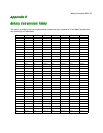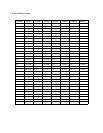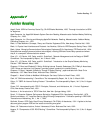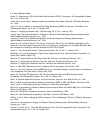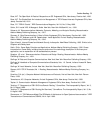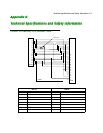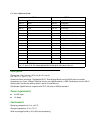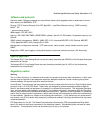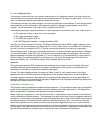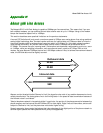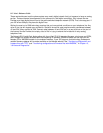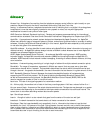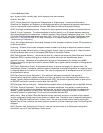
Technical Specifications and Safety Information G-3
Software and protocols
Software media: Software preloaded on internal flash memory; field upgrades done via download to internal
flash memory via XMODEM or TFTP
Routing: TCP/IP Internet Protocol Suite, RIP, AppleTalk*, LocalTalk-to-Ethernet routing*, AURP tunneling*,
MacIP*, IPX
* optional add-on feature
WAN support: PPP, MP, HDLC
Security: PAP, CHAP, PAP-TOKEN, CACHE-TOKEN, callback, SecurID, IP/IPX firewalls, UI password security, and
CallerID
SNMP network management: SNMPv1, MIB-II (RFC 1213), Interface MIB (RFC 1229), Ethernet MIB (RFC
1643), AppleTalk MIB-I (1243), Netopia R2121 MIB
Management/configuration methods: HTTP (web server), serial console, remote modem console, telnet,
SNMP
Diagnostics: PING, event logging, routing table displays, traceroute, statistics counters, Call Accounting
Agency approvals
The Netopia R2121 Dual Analog Router has met the safety standards (per CSA-950) of the Canadian Standards
Association for Canada.
The Netopia R2121 Dual Analog Router has met the safety standards (per UL-1950) of the Underwriters
Laboratories for United States.
Regulatory notices
Warning
This is a Class A product. In a domestic environment this product may cause radio interference, in which case
the user may be required to take adequate measures. Adequate measures include increasing the physical
distance between this product and other electrical devices.
United States. This equipment has been tested and found to comply with the limits for a Class A digital device,
pursuant to Part 15 of the FCC Rules. These limits are designed to provide reasonable protection against
harmful interference when the equipment is operated in a commercial environment. This equipment generates,
uses, and can radiate radio frequency energy and, if not installed and used in accordance with the instruction
manual, may cause harmful interference to radio communications. Operation of this equipment in a residential
area is likely to cause harmful interference in which case the user will be required to correct the interference at
his own expense. Operation is subject to the following two conditions: (1) this device may not cause harmful
interference, and (2) this device must accept any interference received, including interference that may cause
undesired operation.
FCC Requirements, Part 68. The Federal Communications Commission (FCC) has established Rules which
permit this device to be directly connected to the telephone network. Standardized jacks are used for these
connections. This equipment should not be used on party lines or coin phones.



